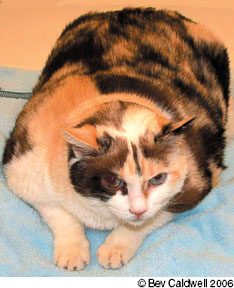Infection Catches Up with Kidney Transplants
As the 20-year anniversary (1987) of the first feline kidney transplant approaches, researchers are getting the rest of the story. Infection is second only to rejection of the transplanted organ as the cause of death in cats that received new kidneys, according to a report in the Journal of the American Veterinary Medical Association (Vol. 227, No. 6).
Thats too bad, because the original story was such a happy one. Owners got to take home two cats for the (considerable) price of one kidney transplant – their original pet, spared the agonies of end-stage renal failure, and the donor cat, with one kidney left.
And the outcomes were gratifying to many cat owners and veterinarians alike. Some 42 percent of transplant recipients were alive and purring more than three years after the operations. For others, however, problems arose with the immunosuppressive drugs (usually a combination of cyclosporine and prednisolone) that keep a transplant recipient from rejecting donor organs.
More than a third of transplant recipients in the study had died or had to be euthanized as a result of infection. About half of the infections started within 75 days of the operation, prompting researchers to predict: In the future, reductions in infectious complications may result from our ability to monitor and adjust the immunosuppressive drug regimen.
———-

234
Rising Concern Over Feline Obesity
Expect a lecture from your veterinarian if your cat is 10 percent to 15 percent over its ideal weight. Goaded by pet insurance companies such as industry leader Veterinary Pet Insurance (VPI) of Brea, California, and by expert advisers to trade journals, such as Dr. Ernest Ward Jr. at Veterinary Economics, veterinarians are getting up the nerve to say: Your cats too fat.
Just kidding. What youll more likely hear is a variation of this scripted line from Dr. Ward: Mrs. Smith, I know you try to keep Fluffy healthy, and one of the best things you could do is control her weight. Feline diabetes and osteoarthritis are only two results of obesity in cats, explains Dr. Ward.
Heres a statistic to help you understand where VPI is coming from: An estimated 40 percent of American household pets are obese or overweight.
If that estimate is true for cats, it represents a startling increase since 1998, when Cornells Dr. Janet Scarlett published her landmark study (Journal of Nutrition, Vol. 128, No. 12) titled Diet and Feline Obesity. The epidemiologist said at the time that an estimated 20 percent of American cats were too heavy and an additional five percent were downright obese (based on a 1991-92 survey of veterinarians patients across the United States).
Veterinarians are being counseled to help cat owners trim down their pets. Pet food companies are coming up with special formulas. And more veterinary clinics are offering do-it-yourself weigh-ins, available without making an appointment – and without a lecture.



